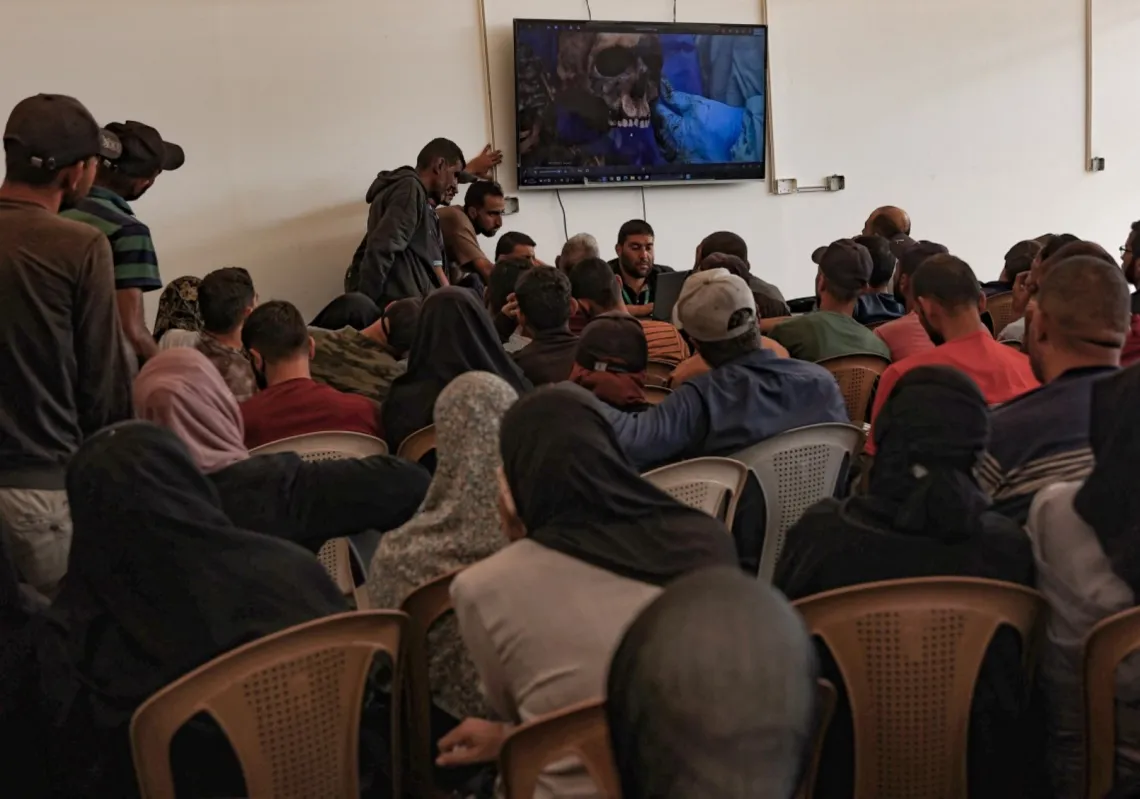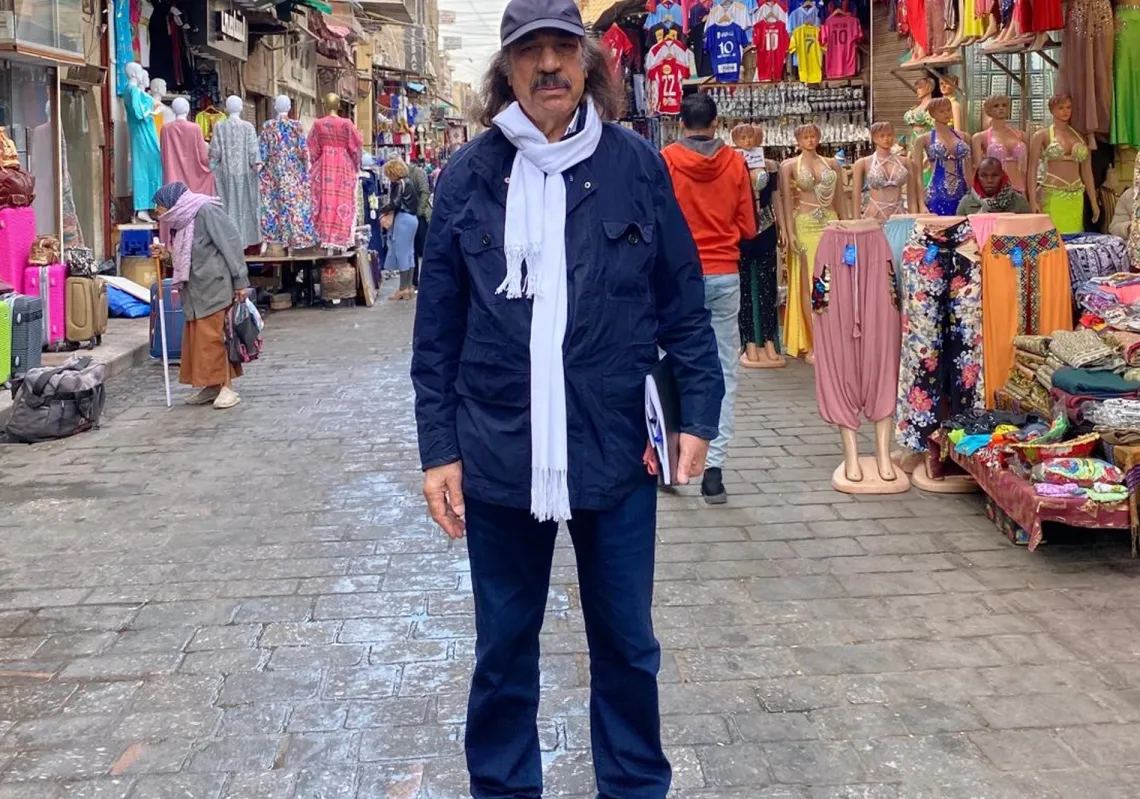After purchasing his first painting, Sheikh Hassan was hooked. Gradually, he purchased one artwork after another until his collection swelled to more than 6,000.
The sheikh began building his collection in the 1980s, primarily through the acquisition of works by Qatari artists. He later began to acquire works from all over the Middle East, North Africa and from within the Arab diaspora.
In 1994, these works were included as part of a collection located in a villa that served as a private museum. In his desire to encourage creativity and expression among those in particularly bad circumstances, Sheikh Hassan also established an artist residency program in the same villa. Desperate for a place of refuge, Iraqi artists have benefitted most from this program.
Spanning a time period that stretches from the 1840s to the present, the ever-growing collection of Arab art has found a plush new home in Doha at Mathaf: Arab Museum of Modern Art—Sheikh Hassan’s greatest achievement to date.
As the museum with the largest collection of Arab art, Mathaf is sure to attract visitors from far and wide. However, a fundamental disagreement between the political and religious values of most Arab states and those of many contemporary Arab artists may preclude Mathaf from becoming the most sought after venue for contemporary Arab and North African artists. Only time will tell whether these bold new artists will find a way to negotiate these boundaries, thereby reaping the benefits of Qatar’s grand push to become a regional hub for culture and commerce with Doha at its heart.
In this interview with The Majalla, Sheikh Hassan talks about how the idea of creating Mathaf originally started, the initial responses he has had and his continuing role in the development of the new museum, set to launch in December 2010.
The Majalla: Where did you get the idea for Mathaf, and how long has it been brewing in your mind?
Specifically when it comes to the idea of the museum, it started not as an idea but as a collection. And it wasn’t until I realized that nowhere in the world did there exist a large collection of Arab art that I made the decision to open Mathaf. I remember asking, “Where is Arab art?” and they would reply, “What is Arab art?”
I have always had an interest and a love for art, and I discovered this when looking for material to educate myself about it. I found that there wasn’t anything around at all. This is one of the main missions of Mathaf—to create that material for other people to be able to research and find out more about it.
Q. What has the response been so far?
Since 1994 when people became aware of the collection they have wanted to know when we were going to do something with it. Due to the amount of pressure we have been under from the art community and from art lovers we decided to speed up the process. This is why the opening will be in a temporary location. The permanent location, however, will not be ready for another four to five years.
Q. One of the aims of Mathaf is to celebrate Qatari identity. Could you elaborate on this?
The Qatari art movement is part of the Arab arts movement, which is part of the larger regional arts movement. The museum is involved in and interested and interactive with art from the whole region so it’s not just the immediate Arab world. It’s also Iran, Turkey, India and Africa as well. And although Europe is part of that larger region we are not involved in Europe because there are already organizations and institutions which take care of European arts.
Qatari art is included just as any other Arab artist would be in the museum. It is not a given preference, which is also due to the fact there is a Qatar national museum specifically for Qatari art.
Q. Why is the focus on modern as opposed to contemporary art?
Modern art in the Arab world is still growing because it has a long history and we continue to discover more and more. Now there is a renaissance movement that began even before the opening of the museum. We are rereading and rediscovering the history that goes further and further back when it comes to Arab and regional art.
A research center has also been created within the museum. There is the educational part to the museum, which is a very important part of it. It allows them to explore this art because they really have no idea what Arab art is, where it comes from and what it looks like. That is one of the main missions of Mathaf, to make our art accessible to the world at large, whether you’re talking about Europe, North America or Asia.
Q. Other components of this research center are the provision of online programs. Can you elaborate on what sorts of online programs you plan to provide?
There will be a database where you can essentially find information about the artists from the region. You can even add any further information you have on a particular artist and it will be interactive throughout the whole world. That will then become part of this museum and part of this encyclopedia.
Q. To what extent does Mathaf plan on collaborating with Western art institutions?
We are at the moment in the process of working with all the modern museums in the world, and our relationships are very strong with these institutions. We are hoping that these relationships will grow but we cannot go any further at the moment because we haven’t even got off the ground yet.
Q. How do you strike a balance between encouraging creativity and expression while not offending the powers that be, whether they are the religious establishment, non-state actors or the government?
There exists a Qatari law that anyone from exhibiting anything which may hurt other people’s feelings or sensibilities. So that makes it easy for us.
Q. What does Arab art have in common and can it act as a unifying force?
Art in the region is different. It is these differences that make it rich. The Gulf is different from Egypt, for example, and each have had their own experiences within the art movement. In Iraq, for example, they have their own national history and pride, whilst in Lebanon they consider themselves more European. This mixture is good. They were searching for their identity, but they don’t think about that anymore. You can sense these changes.
Q. How involved do you plan to be with Mathaf in the future?
I started this with nothing but one painting; now we have around 6,000. The project has grown and now I feel like I’m part of the people again. Until the museum is completed I will be involved in its development, but not through my input in the pieces that we have. For that we have consultants and people who advise on all of those things.
I will make sure that the museum will be able to satisfy its main mission, and this is what I want to focus on. This is my involvement with the museum.
Interview conducted by Jacqueline Shoen







